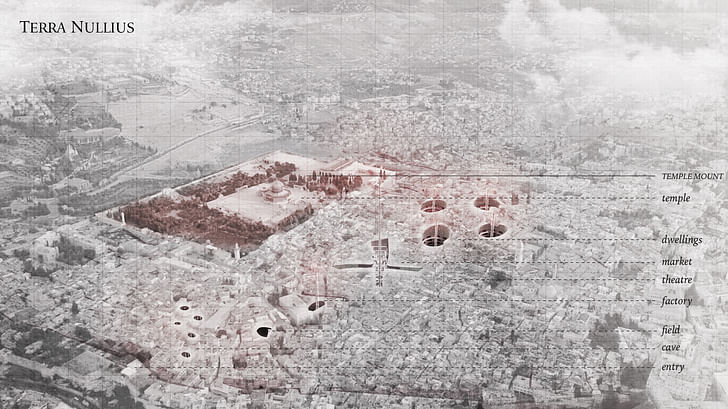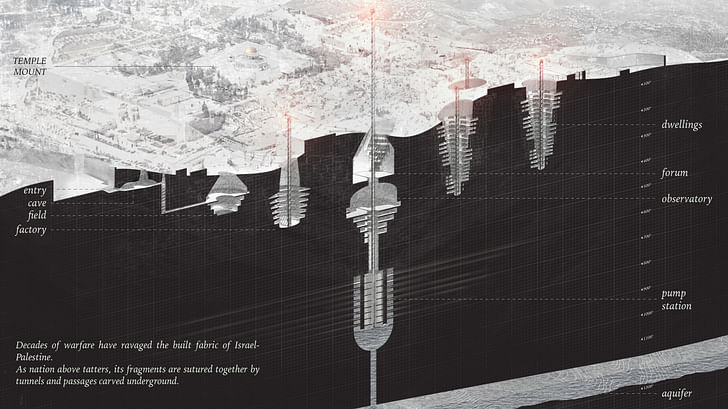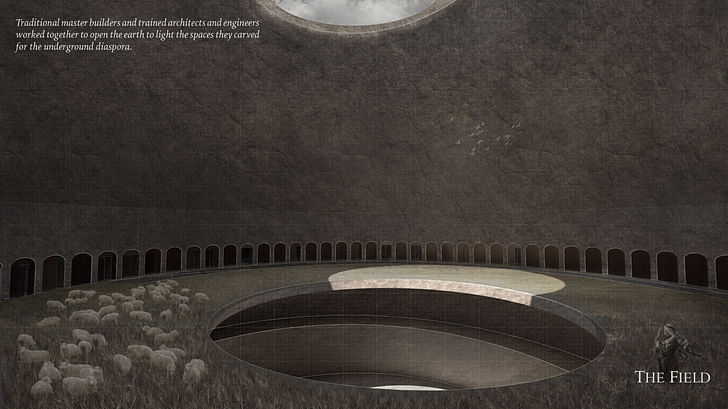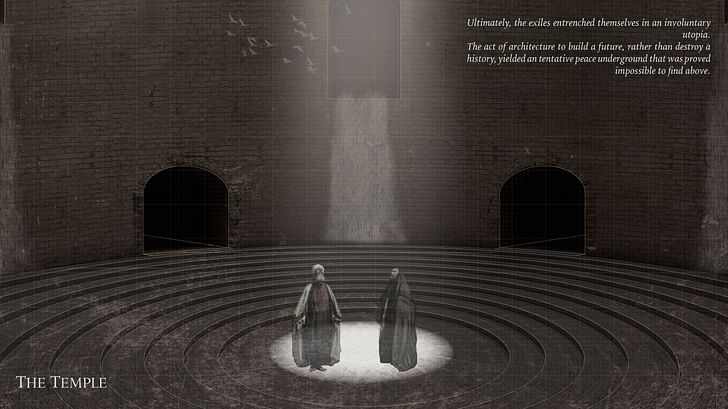

Yara Hantash is a recent graduate from Tulane University's undergraduate architecture program. Archinect was able to connect with Yara to learn more about her experience culminating design research through her thesis project during the coronavirus pandemic. Titled Involuntary Utopia, her exploration centers around the Isreali-Palestinian conflict and how architecture has become "an indisputable act of violence."
Yara takes us through her exploratory investigation of the possible solutions to the architectural problems created by what she has identified as an uninhabitable Jerusalem. Producing this project while learning remotely, Yara says she realized that the new focus on presenting her project virtually provided unique opportunities to craft a more "cinematic" narrative for her audiences.
Archinect's Spotlight on 2020 Thesis Projects: 2020 has been an extraordinarily challenging year for architecture graduates. Students were displaced as schools shut down, academic communities had to adapt to a new virtual format, end-of-year celebrations were canceled or changed dramatically, and now these students are graduating into an extremely challenging employment market. To support the 2020 class we're launching a summer series of features highlighting the work of thesis students during this unique time of remote learning amid COVID-19. Be sure to follow our 2020 thesis tag to stay up to date as we release new project highlights.
By Yara Hantash


In the singular case of the Israeli-Palestinian conflict, the act of architecture has become an indisputable act of violence. The resultant spaces are irreconcilably divided and dividing, occupied and occupying, excluded and excluding. At the current trajectory, it seems that the negative character of architecture will not and cannot be redeemed. The following investigation speculates upon a future in which this destructive architectural culture renders Jerusalem uninhabitable.

Traditionally, solutions to the deterioration of the built fabric have been redundant and normative: redrawing of borders and cartographic manipulations. Several architects, led by Eyal Weizman, posit that the issues that are normally confined to maps and plans are in fact part of a complex, three-dimensional matrix that is to be approached “vertically.” In this spirit of investigation, the thesis design proposal explores the possibility of a subterranean solution to the architectural problems identified in Jerusalem.

In his seminal speech on heterotopia, Of Other Spaces, Michel Foucault proposes the metaphor of the mirror. He likens the mirror to a utopia, a “placeless place,” because it portrays a world that is not reality, but a reflection of it. However, the mirror itself is a heterotopia, as it exists in reality while it encapsulates an inverted projection of reality. This metaphor reflects, for lack of a better term, the design intent of the proposal, which is to “represent, contest, and invert” the existing condition of Jerusalem.

On Remote Learning and Presenting Virtually
Remote learning was an advantage for my thesis. As my project progressed, I realized that computer generated graphics would be a powerful medium for representing the emotional depth of the project. I was afforded a lot of time to layer the images with detail and test several graphic styles to best convey my message. Regarding presentation, online presentations provided a cinematic aspect to the images and resulted in a more holistic experience. A narration of each image as they occupy the screen by themselves, rather than standing in front of a cluster of drawings, created an impactful and reflective atmosphere.

Advice For Students Working on Their Thesis
Anyone going through thesis should understand the independence given to them in their studies and take advantage of it. Find something to be passionate about and pursue it to its fullest. It can be daunting to approach a project or idea or concept by yourself, and it can be hard to push yourself to do the work. The product, though, is the most rewarding achievement of your academic career.

Sean Joyner is a writer and essayist based in Los Angeles. His work explores themes spanning architecture, culture, and everyday life. Sean's essays and articles have been featured in The Architect's Newspaper, ARCHITECT Magazine, Dwell Magazine, and Archinect. He also works as an ...
2 Comments
The sections remind me of the headquarters in resident evil movies. Villains always do seem to have the coolest architecture in the movies. Cool project!
Amazing project Yara!
Block this user
Are you sure you want to block this user and hide all related comments throughout the site?
Archinect
This is your first comment on Archinect. Your comment will be visible once approved.